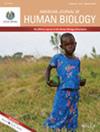Brown Adipose Tissue Activity and Childhood Exposure to Cold Are Associated With Hot Flashes at Menopause
Abstract
Objective
Hot flashes (HFs) are experienced as sudden sensations of heat. We hypothesized that brown adipose tissue (BAT) activation could increase the likelihood of HFs in winter. The aim of this study was to test whether women with more BAT activity were more likely to experience self-reported or biometrically measured HFs.
Methods
Women aged 45–55 years (n = 270) participated in face-to-face interviews and anthropometric and ambulatory measures. Level of BAT activity was estimated from the difference in supraclavicular skin temperature measured by infrared thermography before and after cooling. Logistic regressions were applied to examine whether bothersome HFs (yes/no) during the past 2 weeks were associated with BAT activity, adjusting for menopausal status, childhood exposure to cold, waist/hip ratio, and self-reported health. Linear regressions were used to examine the frequency of self-reported and biometrically measured HFs during the study period and BAT activity, adjusting for potential confounders.
Results
Menopausal status, childhood exposure to cold, waist-to-hip ratio (WHR), and self-reported health were associated with both BAT activity and HFs. After adjusting for potential confounders, an increase in BAT activity almost tripled the likelihood of bothersome HFs (OR 2.84, 95% CI 1.26–6.43). In linear regressions, BAT activity was not associated with frequency of subjective or objective HFs during the study period, but childhood exposure to cold was associated with subjective HF report (β = 0.163, p = 0.010).
Conclusion
To our knowledge, this is the first study of BAT activation and HFs. Our results support a role for BAT activity in HF experience. Therefore, we encourage further examination of the role of BAT, as well as childhood exposure to cold, in HFs.

 求助内容:
求助内容: 应助结果提醒方式:
应助结果提醒方式:


